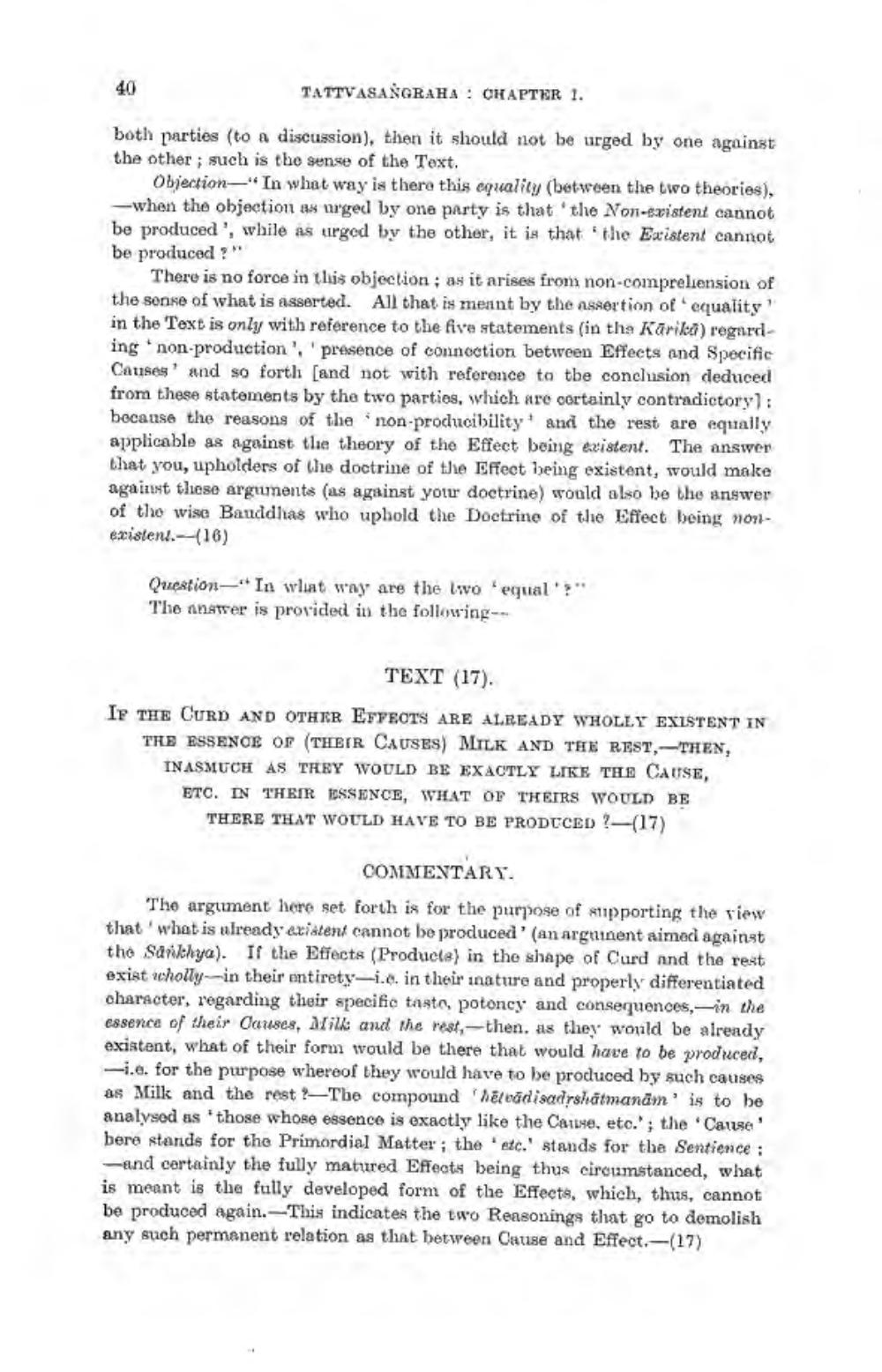________________
TATTVASANGRAHA : CHAPTER 1.
both parties (to a discussion), then it should not be urged by one against the other ; such is the sense of the Text.
Objection-"In what way is there this equality between the two theories), -when the objection as urged by one party is that 'the Non-existent cannot be produced', while as urged by the other, it is that the Existent cannot be produced ?"
There is no force in tliis objection, as it arises from non-compreliension of the sense of what is asserted. All that is mennt by the assertion of equality in the Text is only with reference to the five statements in the Karika) regarding non-production', presence of connection between Effects and Specific Causes and so forth (and not with reference to the conclusion deduced from these statements by the two parties, which are certainly contradictory): bocause the reasons of the non-producibility and the rest are equally applicable as against the theory of the Effect being existent. The answer that you, upholders of the doctrine of the Effect being existent, would make against these arguments (as against your doctrine) would also be the answer of the wise Bauddhas who uphold the Doctrine of the Effect being nonexistent. (16)
Question-"In wluat way are the two equal'?" The answer is provided in the following
TEXT (17).
IF THE CURD AND OTHER EFFECTS ARE ALREADY WHOLLY EXISTENT IN
THE ESSENCE OF THEIR CAUSES) MILK AND THE REST -THEN, INASMUCH AS THEY WOULD BE EXACTLY LIKE THE CAUSE, ETC. IN THEIR ESSENCE, WHAT OF THEIRS WOULD BE
THERE THAT WOULD HAVE TO BE PRODUCED ?-(17)
COMMENTARY The argument here set forth is for the purpose of supporting the view that what is already existent cannot be produced' (an argument aimed against tho Sankhya). If the Effects (Producte) in the shape of Curd and the rest exist wholly--in their entirety-i.e. in their inature and properly differentiated character, regarding their specific tasto, potoncy and consequences,-in the essence of their Causes, Milk and the rest, -then. as they would be already existent, what of their form would be there that would have to be produced, -i.e. for the purpose whereof they would have to be produced by such causes as Milk and the rest ?The compound hēlcãdisadysłatmanām' is to be analysed as those whose essence is exactly like the Cause, etc.'; the 'Cause' bere stands for the Primordial Matter; the .edc.' stands for the Sentience : -and certainly the fully matured Effects being thus circumstanced, what is meant is the fully developed form of the Effects, which, thus, cannot be produced again. This indicates the two Reasonings that go to demolish any such permanent relation as that between Cause and Effect.-(17)




